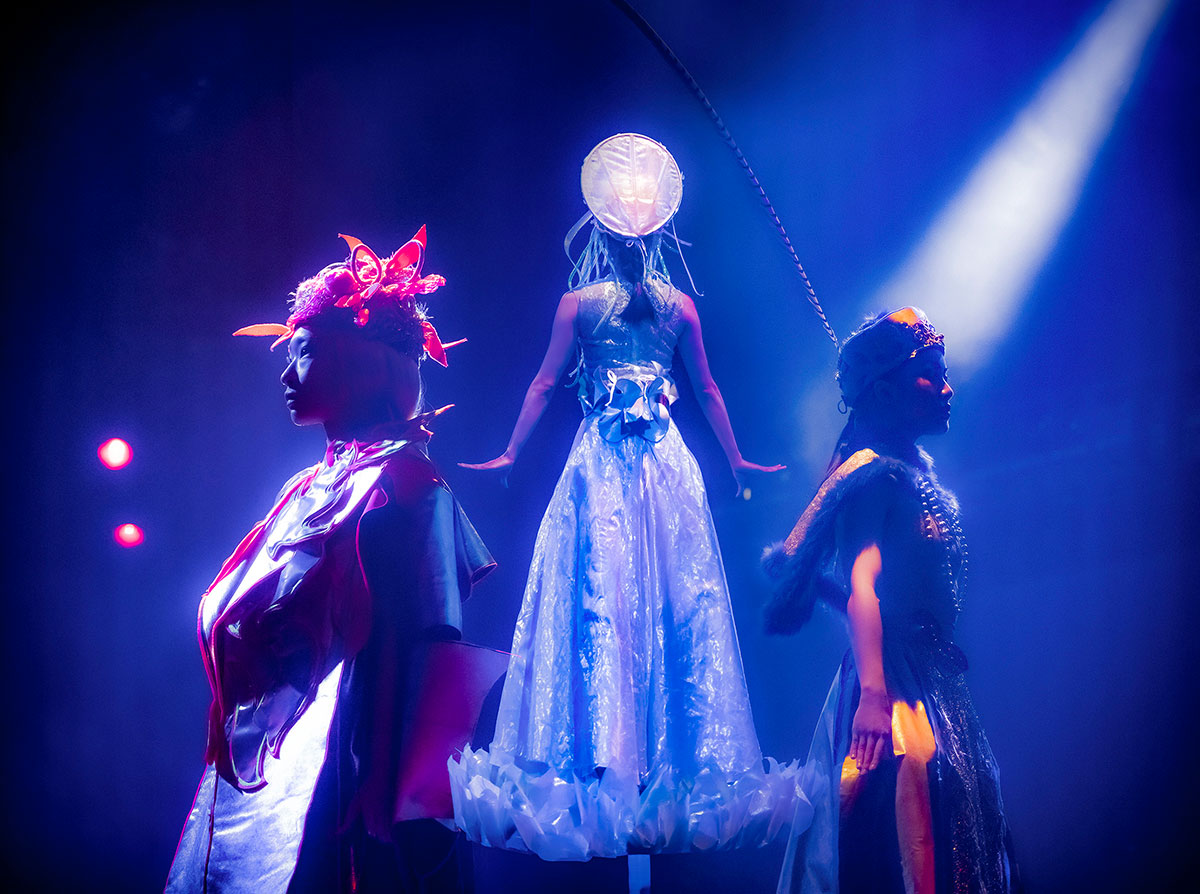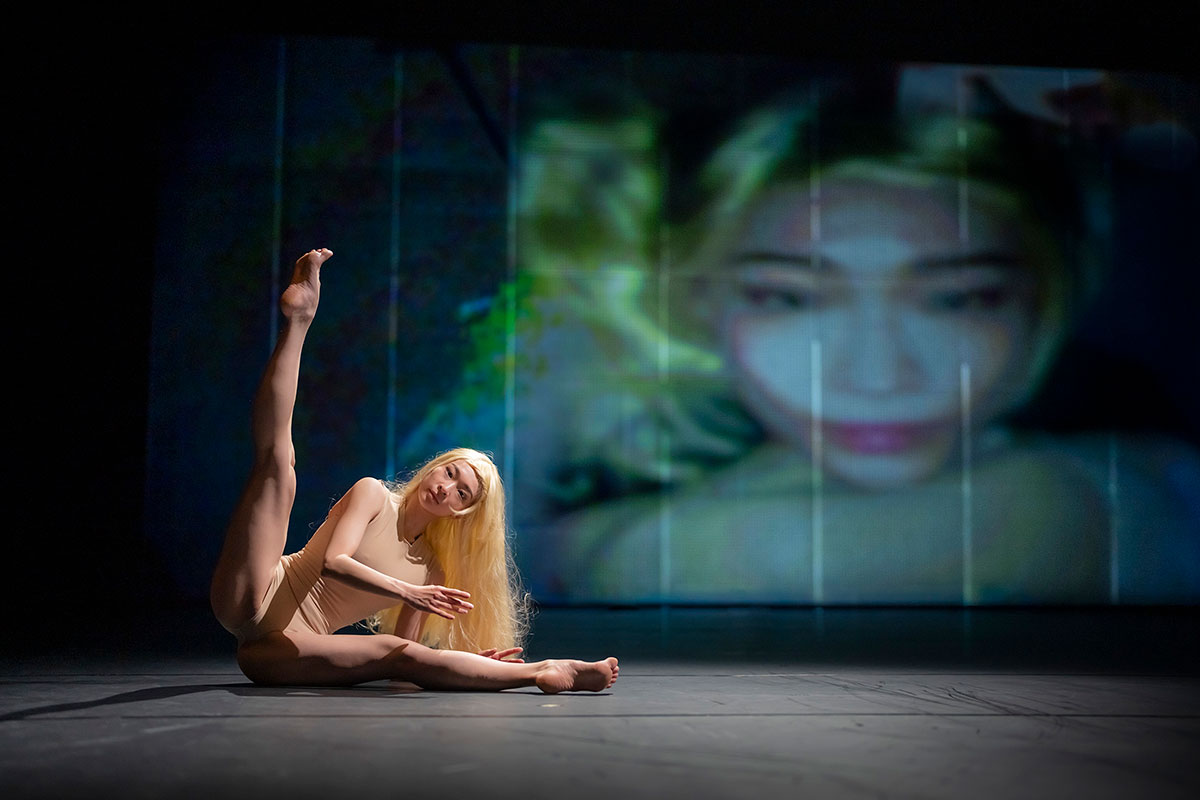HO Hsiao-Mei, MeimageDance

New Paradise of Silent Island
- 2022, single-channel video, dimensions variable.
- Courtesy of the artist.
- Photo credit: Liu Chen-Hsiang.
Curatorial Perspective
The entanglement among all sentient beings is like the pull of gravity, and works of dance and sculpture are closely linked with the working with gravity. Since the very beginning, dance has always dealt with the history of the body involving the human species as a vertebrate and natural gravity, along with the development of forces in between: Ballet requires dancers to dance on tiptoes, elevating their bodies lightly to free from the limit imposed by gravity, while pursuing a sense of ethereal beauty. Barefoot dancers of modern dance gradually shift their center towards the ground to re-explore the connection between the body and the earth. In post-modern dance, choreographers use vertical wall surfaces as the ground to inquire into the multilayered relationship between the body and gravity. These works by MeimageDance utilize local Taiwanese elements as a starting point. Drawing inspiration from swaying movement suggesting the presence of deities in temple folk parades, the loss of center and balance produces an effect of nausea and trance.
In Flesh to Virtuality: Renaissance of Its Ashes in VR, the enormous body is not only a surreal spectacle of the flesh, but also a striking landscape that enables the participants to experience spirituality. New Paradise of Silent Island brings together multiple Taiwanese cultural elements, and collects highly recognizable cultural symbols, ranging from images of deities, betel nut beauties, all kinds of people in society, puppets, and Barbie dolls, and employs a customized puppetry device that enables dancers to stand in mid-air to challenge the dancers’ center of gravity by extreme oscillation. The female dancer’s unsteady perspective of looking at the body in Monologue of Barbie demonstrates a different dynamic of free gravity. Balance on Edge: The Field of Movement delineates how the artist’s has actively explored different movements and tested the dancers’ center of gravity throughout her creative process. These experimental choreographies reveal the artist’s multifaceted attempt at exploring the relationship between the body and gravity, while responding to the technical history of the body, gender, performance, and the idea of “all things are sentient” discussed in the exhibition.
Creation Description
Flesh to Virtuality: Renaissance of Its Ashes in VR is a trail of life and a ritual of pain. The extreme contortions of the dancers’ bodies display the physical suffering and the suffering for love and desire. In the virtual reality version, the viewers participate as a minimal view point that physically stands on a dancer’s body. With the dancer’s body tremendously enlarged, the viewers observe its subtle changes closely. Tiny vibrations of the body become earthquakes. This not only recreates the body as a surreal spectacle but also enables the viewers to spiritually experience the body as the landscape that bears us.
New Paradise of Silent Island is adapted from Ho Hsiao-Mei’s series of works related to islands. This work brings together multiple Taiwanese cultural elements and collects highly recognizable cultural symbols, such as images of deities, betel nut beauties, all kinds of people in society, puppets, and Barbie dolls. Its intense visual design challenges the relation between seeing and being seen. In this work, a customized puppetry device enables dancers to stand in mid-air. As the roles of humans and puppets switch, the dancers’ center of gravity is tested by extreme oscillation, and audiences are immersed in dazzling scenes. In the Taiwan Art Biennial, this work is projected on the original scale to reproduce the performance setting.
In Monologue of Barbie, the dancer performs the perfect human figure based on Barbie dolls. As she interacts with apendant lamp hanging from above, details of the body of the Barbie doll are observed via a camera placed inside the light. Ho Hsiao-Mei endows this work with the feminine “attention to one’s self” and uses the “know thyself” that comes from it. Moreover, Monologue of Barbie is a feminine, dynamic, multi-dimensional, heterogeneous, and audiovisual composite work under constant construction. Amid a mix of sound, light, and images, the dynamic body not only “exists in itself” but also “exists for itself.” During this exhibition, captured images are displayed and a mini-Monologue of Barbie sculpture installation and the hanging light are presented in contrast, in order to demonstrate this work.
During the creation of Balance on Edge: The Field of Movement, the choreographer actively explored the relationships between movement and center of gravity. Perception of gravity is an important medium for presenting the body. Using technology to make the invisible center of gravity visible is a direction for continual future development. In this work, millimeter wave radar technology is applied to observe the existence of the center of gravity of the body. A video of the experimental process is presented in this exhibition.


